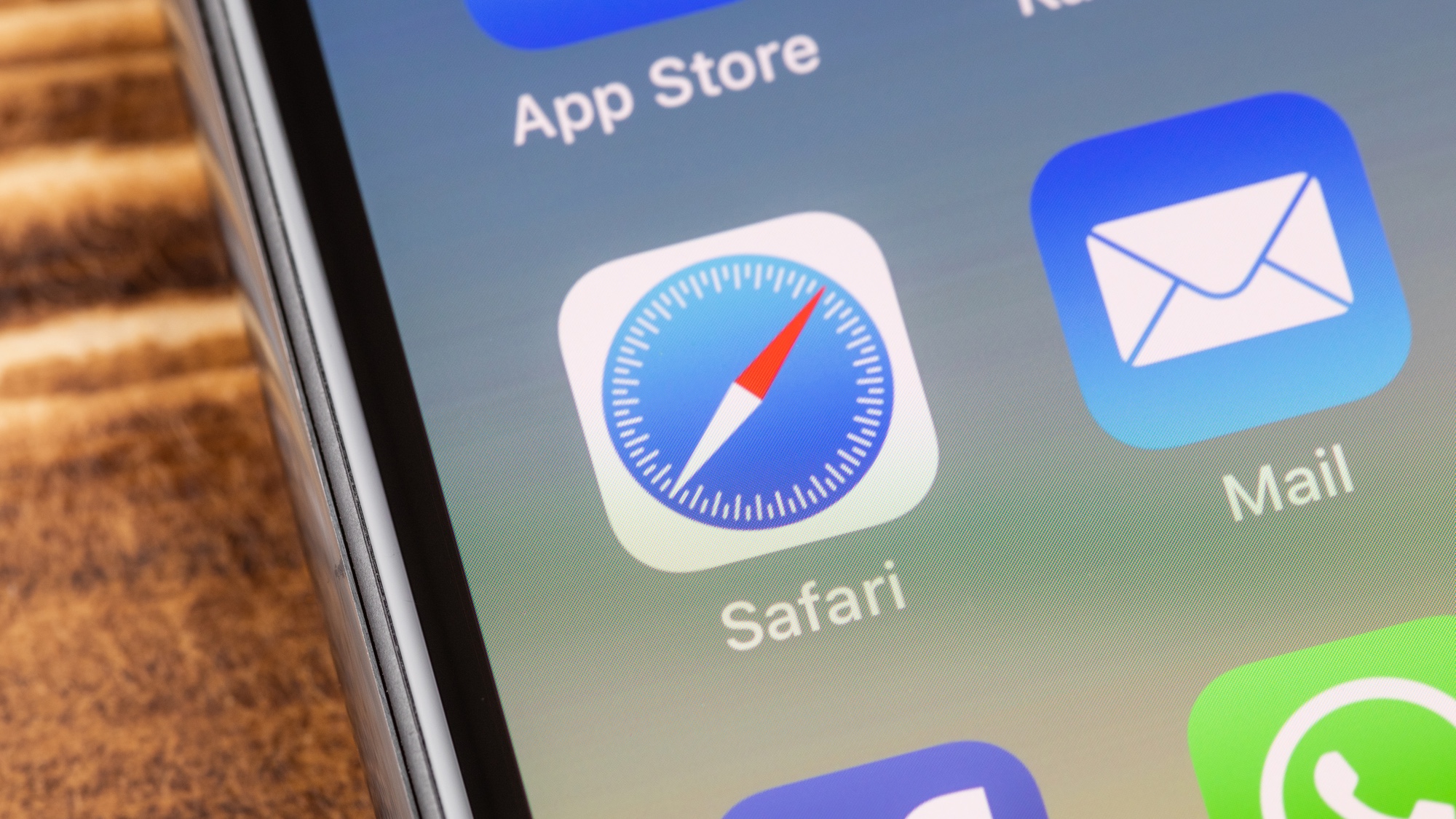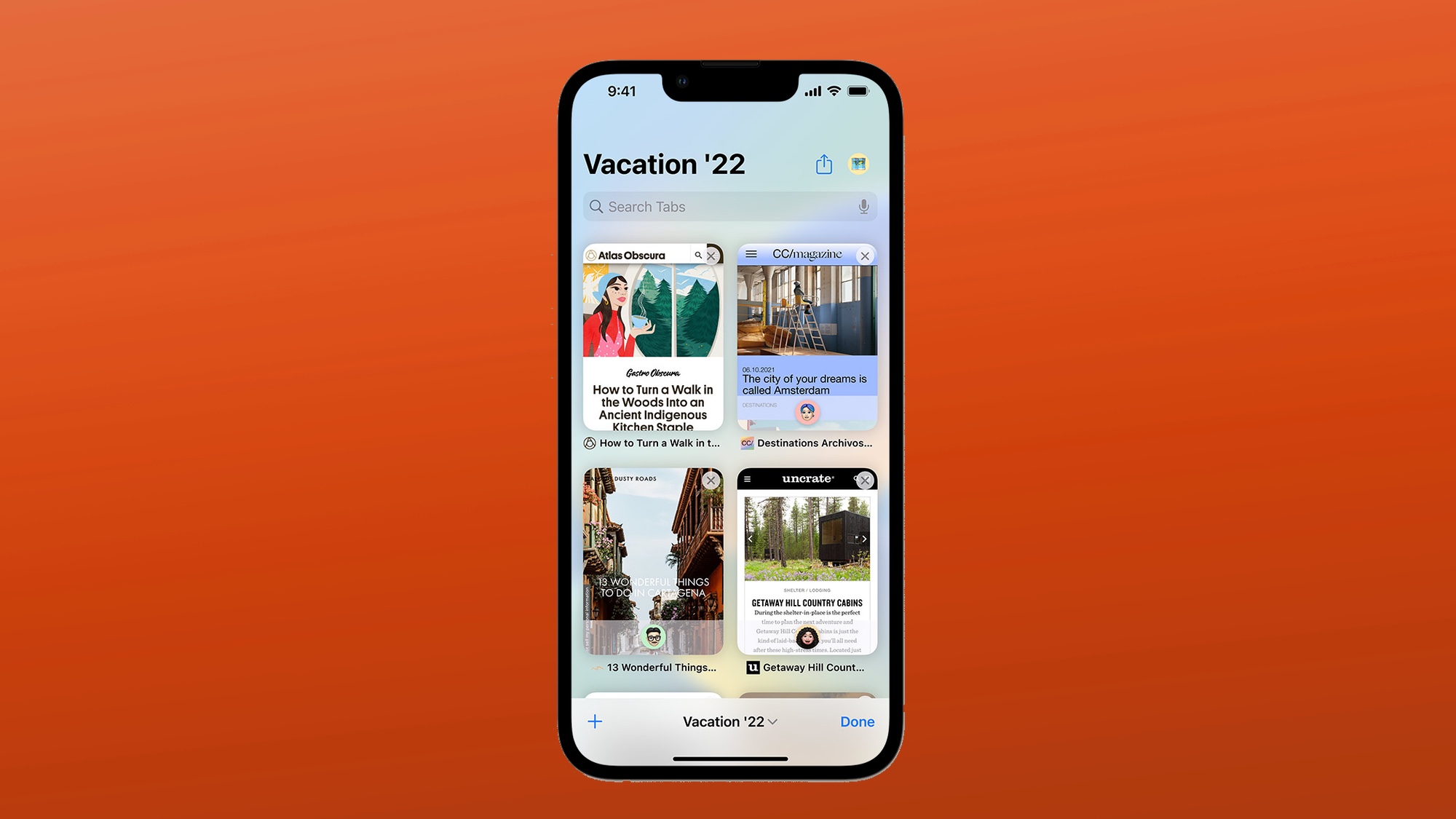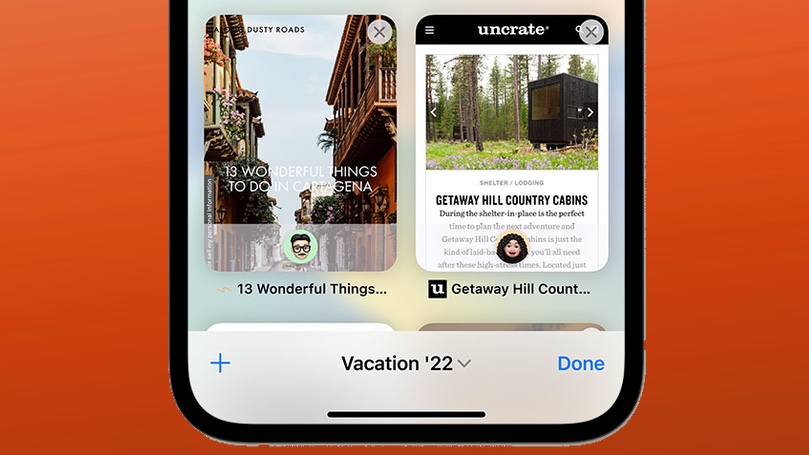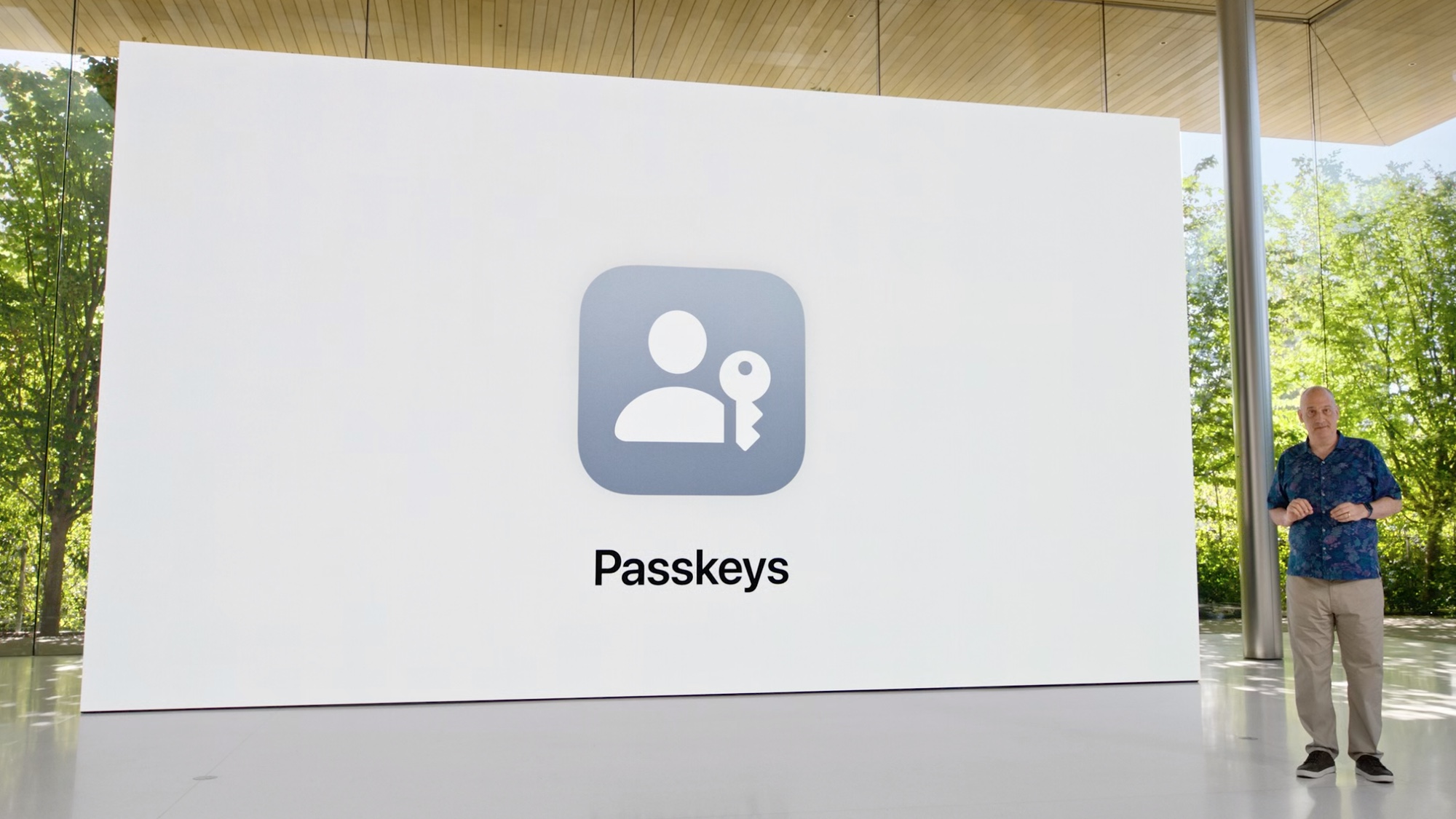iOS 16 Safari — the biggest changes coming to your iPhone’s browser
Shared Tab Groups and passkeys are the biggest changes in the new iPhone software update

iOS 16 Safari isn't quite the radical reboot of the mobile web browser that iOS 15 introduced. For starters, the tab bar is staying in the same place, at the bottom of the screen by default. (This assumes that you didn't move the tab bar back to the top of the screen the minute you upgraded to iOS 15.) But there are still some changes in Apple's updated iPhone software — one that will be apparent right away and another that will take time to develop.
The change you can use the moment you install iOS 16 — whether you download the developer beta, plan to wait for the iOS 16 public beta's arrival in July or won't check out iOS 16 until the full version arrives in the fall — is Shared Tab Groups. This feature builds on a less controversial addition from iOS 15 Safari, by letting you take all those web pages you've grouped together and share them with other people.
In addition, Apple is also using iOS 16 to introduce us to passkeys, its attempt to usher in a password-free future for web browsing. Instead of having to remember and enter in a password for each online site, the updated version of Safari issues you a digital key tied to your your user account and verified with biometric information like Face ID on your iPhone. The change isn't going to happen overnight, but Apple is betting that it leads to more secure browsing that what we experience now.
These changes to iOS 16's version of Safari aren't taking place in a vacuum. They're being implemented alongside similar updates from macOS Ventura and iPadOS 16, both of which figure to arrive alongside the finished version of Apple's iPhone software this fall. Here's what we know about the iPhone implementation of these updates based on Apple's iOS 16 preview and what people who've used the developer beta have been saying about Safari.
iOS 16 Safari: Shared Tab Groups
As we mentioned, Tab Groups came to Safari with last year's iOS 15 update, and while I felt the feature was better suited for the Mac, it was still helpful for research projects to keep related web pages grouped together. At the very least, Safari Tab Groups brought some measure of organization to the iPhone's default web browser.

With iOS 16, Tab Groups are picking up collaboration features, too. Shared Tab Groups is the big addition to Safari that does exactly what its name implies — you can take those Tab Groups you've assembled and share them with other people. They can add browser tabs of their own, contributing to your research project.
The benefits of Shared Tab Groups should be apparent. If you're planning a vacation, you and your partner can exchange tabs featuring possible lodgings, to-dos and travel info. You can share research with fellow students on a school project or relevant web pages for a work project you're collaborating on with colleagues. As with Tab Groups, the shared version syncs across the different Apple devices you own (assuming they're all running the latest software updates that Apple's releasing this year).
Sign up to get the BEST of Tom's Guide direct to your inbox.
Get instant access to breaking news, the hottest reviews, great deals and helpful tips.

Sharing Tab Groups is as easy a tapping the share button next to the name of the Tab Group and selecting who you want to share with. The feature promises real-time collaboration — you'll see the icons of the people in your share group on the tabs they're looking at, and you'll be able to see any changes made as they happen. You can share Tab Groups through Messenger, as part of the chat app's newfound collaboration capabilities in iOS 16.
Other Tab Groups improvements in iOS 16 Safari
Shared Tab Groups grabs the headlines, but it's not the only enhancement Apple is introducing to this particular feature. You can now distinguish your different Tab Groups with their own customized start page. That includes a different background image for each group as well as group-specific favorites. In addition, iOS 16 Safari supports pinned tabs for your different Tab Groups.
iOS 16 Safari passkeys
Back in May, Apple joined Google and Microsoft to announce expanded support for the FIDO passwordless sign-in standard. iOS 16 Safari yields the first fruits of that stepped-up support in the form of passkeys, which are meant to do away with passwords when you sign into websites and apps.

The problem with passwords — besides the fact that not everyone uses the best password practices — is that they can be obtained via phishing and other social engineering attacks if you're not vigilant. And even if you are and use one of the best password managers, someone could still hack into the website of a database or company and steal your login credentials that way. Passkeys answer that threat by tying a digital key to your user account and then having you confirm that you're the one signing in either through a fingerprint or face scan. (That's Touch ID or Face ID, if you're using Apple's hardware.)
It's unclear how prominent passkeys will be when iOS 16 launches — you'd imagine Apple will implement them with its own websites and services first — but Apple promises that you will be able to sync them across all the Apple devices you own through your iCloud keychain. Additionally, Apple's involvement with FIDO means that you'll be able to sign into non-Apple devices by scanning a QR code with your phone and confirming your identity with Touch ID or Face ID.
In its passkeys preview at WWDC in June, Apple described the move to the new login standard as a journey, meaning passwords will remain with us for a little while longer. To that end, iOS 16 promises some additional password improvements such as enhancements to strong passwords generated in Safari. The Wi-Fi section of the Settings also is also getting a new edit button that lets you review Wi-Fi passwords stored on your phone so that you either share them with others or delete them if you no longer need them.
Philip Michaels is a Managing Editor at Tom's Guide. He's been covering personal technology since 1999 and was in the building when Steve Jobs showed off the iPhone for the first time. He's been evaluating smartphones since that first iPhone debuted in 2007, and he's been following phone carriers and smartphone plans since 2015. He has strong opinions about Apple, the Oakland Athletics, old movies and proper butchery techniques. Follow him at @PhilipMichaels.

